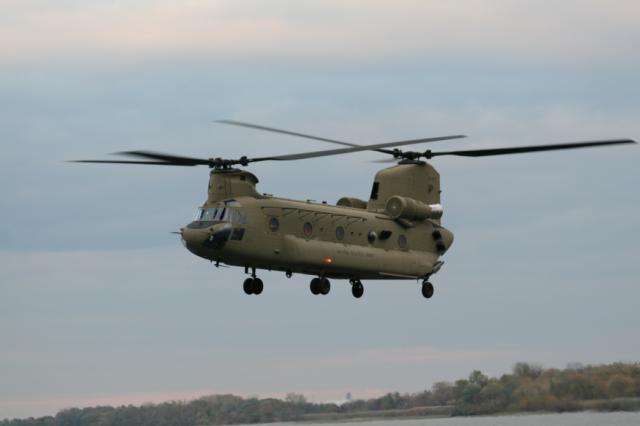Congress’ Budget Gridlock Threatens Army Hypersonics
Posted on

Sandia National Laboratories glide vehicle, the ancestor of the new Army-built Common Hypersonic Glide Body
WASHINGTON: The Pentagon confirmed this morning that budget gridlock in Congress will delay the Army’s urgent drive to field a Long-Range Hypersonic Weapon by 2023 unless Congress passes a regular defense spending bill. A stopgap funding bill, known as a Continuing Resolution, “delays critical long lead purchases, putting planned delivery at risk, adversely impacting the ability to deter and defeat near-peer adversaries.”
There were no further details about the specific contract or contracts that would be affected. But “long lead” procurement is typically required for components that are so complex and/or time-consuming to produce that they must be ordered well ahead of everything else. In the case of a radically new technology like a hypersonic missile, of which the US has only built a handful of prototypes to date, the long lead time may be necessary just to build the factories that will then build the components to build the weapon.

Dynetics concept for their Common Hypersonic Glide Body (C-HGB)
The Army has already awarded contracts totaling $699 million for two other crucial pieces of its hypersonics program. The good news is that those contracts use monies already appropriated by Congress and are not at risk. Dynetics will build a Common Glide Body — the part of the weapon that separates from the rocket booster and maneuvers through enemy missile defenses to the target — for both the Army and Navy. Lockheed Martin will integrate the glide body and a host of other components such as rocket boosters, guidance systems, and launcher trucks into a working weapon system.
But at least some of those other components are not yet on contract. If Congress can’t put together a regular defense appropriations bill in time, the next CR will only pay for ongoing activities to continue at last year’s funding level, which means the government can’t make new contracts. Dynetics could still build its glide body and give it to Lockheed Martin, but Lockheed won’t have enough of the other components required to build the weapon, like trying to build a Lego set without half the pieces.
The Pentagon release — a followup to questions asked but not answered during yesterday’s formal press briefing — also mentioned two other programs that would be delayed. But neither of them is as crucial or central to the Pentagon’s strategy to counter China and Russia:
- One is a Navy-Marine Corps plan to purchase 32 training helicopters (the Advanced Helicopter Training System), a contract supposed to be awarded in November, with Airbus, Bell, and Leonardo in the competition. That would reduce the rate at which the services can train new pilots.
- The other is an Air Force upgrade to the GPS navigation system on the venerable but still vital B-52 bomber, potentially affecting mission readiness.
It looks as if the Office of the Secretary of Defense asked for an example from each of the three service departments — Army, Air Force, and Navy (which includes the Marine Corps). But only the Army came forward with a high-priority problem.

CH-47F Chinook
“We’re not jumping off a building”
Earlier this week, the Army’s three-star chief of long-term budget planning said a Continuing Resolution would be survivable. But it would delay “a couple dozen” new programs — none of which he would name — at a time the service is ramping up its most ambitious and expensive modernization effort in 40 years.
“If we have a short-term CR, it’s going to be okay,” Lt. Gen. James Pasquarette told an Association of the US Army breakfast on Wednesday. “We’re not jumping off a building.”
How long can “short-term” be, reporters asked the general after the event.
“As long as we get an appropriation by the beginning of the calendar year, I think we’ll be okay,” Pasquarette said.

Lt. Gen. James Pasquarette, Army Deputy Chief of Staff (G-8)
The federal fiscal year begins October 1st, but Congress has only passed a full-up defense appropriations bill on time once in the last two decades. That was last year, as part of a comprehensive budget agreement for 2018 and 2019 that, once again, bypassed the mandatory cuts in the 2011 Budget Control Act, known as sequestration. This year, however, Democrats and Republicans are deeply at odds over President Trump funding of border wall construction by taking funds from military bases, delaying a host of important programs. The administration expects Congress to backfill the resulting hole in the base account, something Democrats see as backdoor funding for a wall they bitterly oppose.
One thing the House and Senate can agree on? Both appropriations committees rejected the Army’s most controversial cut in its 2020 budget, a decision to truncate the CH-47F Chinook helicopter upgrade. Then-Army Secretary Mark Esper — now Secretary of Defense –repeatedly insisted the Chinook fleet was already in fine shape and the Army needed the money for radically new designs better suited to future war. While only $28 million is at stake in 2020, the total savings over the five-year budget plan for 2020-2024 would have been $962 million.
Army leaders now seem resigned to spending one billion dollars on extra Chinooks.
“We’re in the process, working with the staff up there on things we’d like them to reconsider and what we’re okay with,” Pasquarette told the AUSA breakfast. On the CH-47s specifically, he said, ” I think we’re going to land in a place where everybody’s comfortable on that… It’s not what we’ve asked for, but it’s i think what we’re going to have to work through.”
Or, to sum up the whole fiscal situation: It may be good enough for government work.
Subscribe to our newsletter
Promotions, new products and sales. Directly to your inbox.
